Discover the hidden world of arboreal plants, which get a leg-up in the world by living in the trees.

Ecologists with an interest in epiphytes: KC Burns and Tom Dawes stand in front of a climbing rata growing up a larger tree, alongside the canopy walkway at Otari Wilton's gardens. Photo: RNZ / Alison Ballance
Find Our Changing World on Apple Podcasts, Spotify, Stitcher, iHeartRADIO, Google Podcasts, RadioPublic or wherever you listen to your podcasts
Victoria University of Wellington PhD student Tom Dawes says ten percent of the world’s plants have forsaken the ground to live in the tree tops, a place that fellow ecologist K.C. Burns describes as a ‘hidden world.’
Life in a forest is a race to the top, to get as much sunlight as possible - and by starting life in a tree, epiphytes are getting an advantage over their competitors.
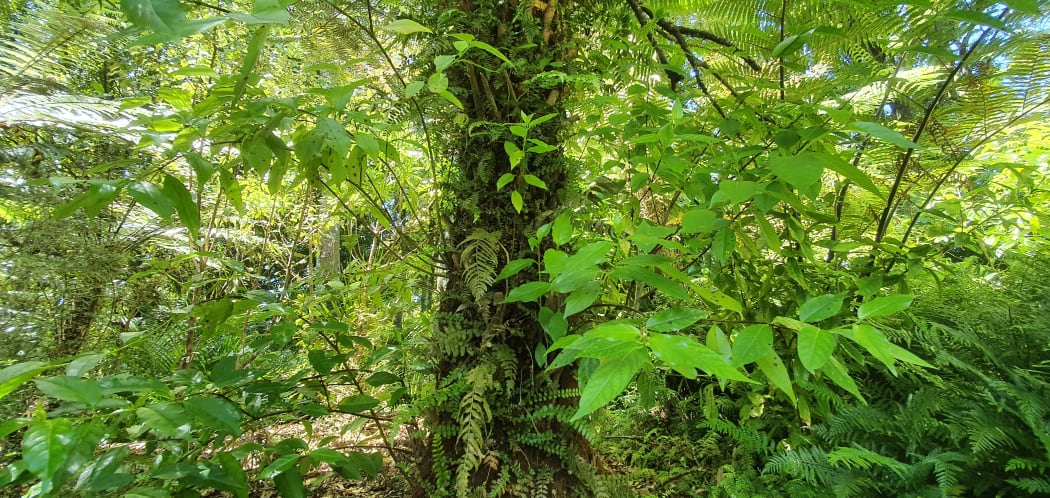
Epiphytic ferns scramble up a tree trunk at Otari Wilton's gardens. Photo: RNZ / Alison Ballance
Epiphytes have various strategies for life at a height.
Some arrive as seeds or spores blown on the wind, while others are deposited by obliging birds dropping seeds in their, well, droppings.
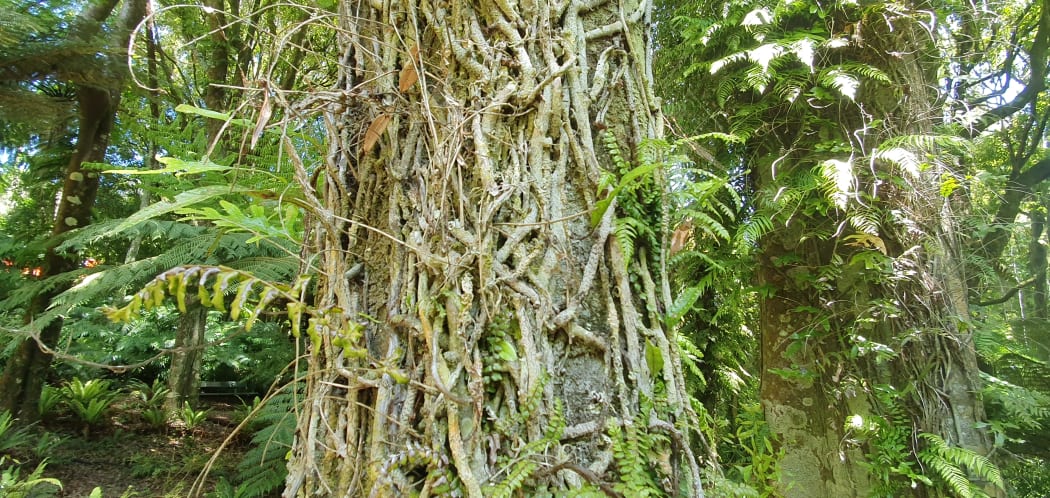
Tree trunks covered in an assortment of epiphytes. Photo: RNZ / Alison Ballance
Some such as leathery-leaved climbing ferns scramble over tree trunks in the mid canopy, neither touching the ground or reaching the sun. The make do with whatever nutrients the rain washes in.
Other species, such as New Zealand’s mostly flame-red mistletoes, are semi-parasites. They tap into their host’s branches to steal food and water, but prefer to perch in the very canopy of the tree to claim a share of the sunlight that they also use for photosynthesis.
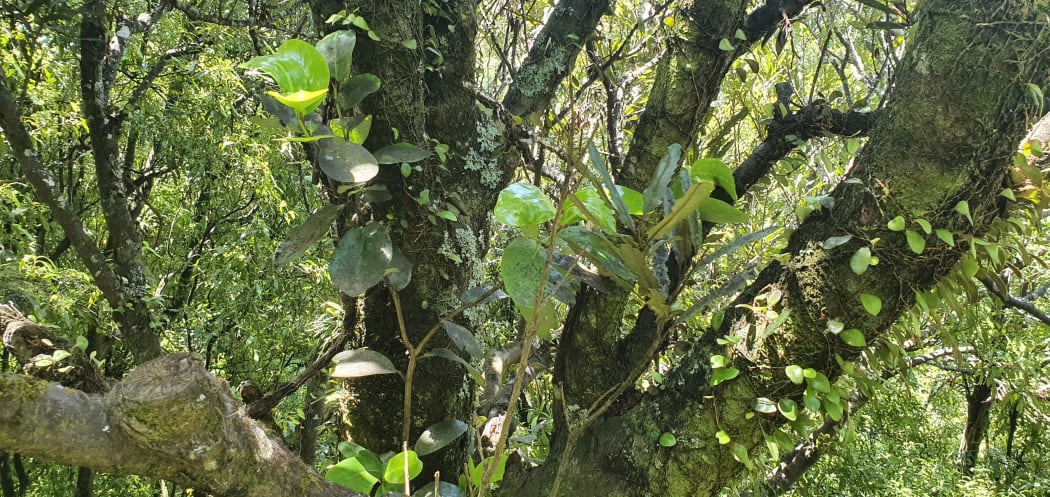
A large-leaved Griselinia grows in the crook of a branch high off the ground. Photo: RNZ / Alison Ballance
Some species such as puka, Griselinia lucida, are equally at home on the forest floor or in the crook of some high branches. From there, they send down long roots that grow into the soil.
Other species begin on the ground and then scramble skywards.
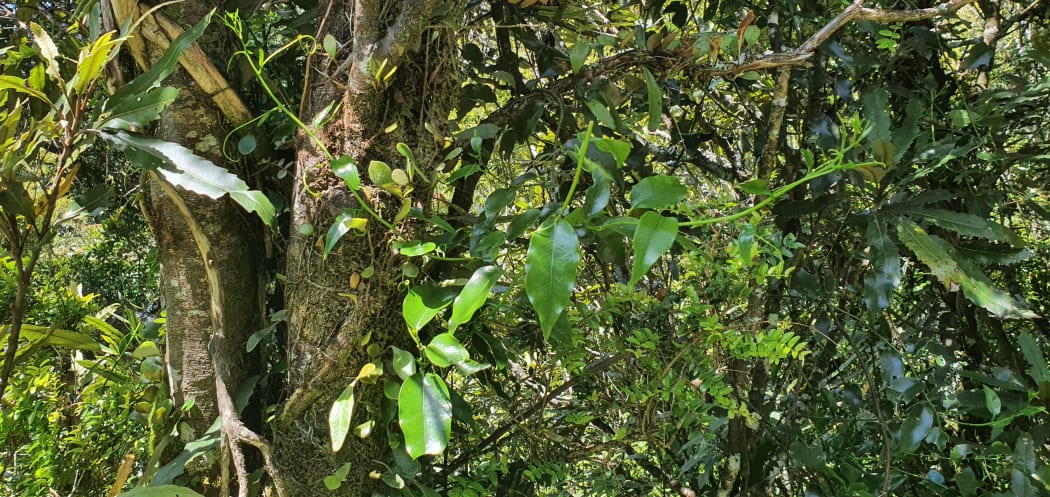
A scrambling vine covers a tree trunk with a tangle of stems and roots. Photo: RNZ / Alison Ballance
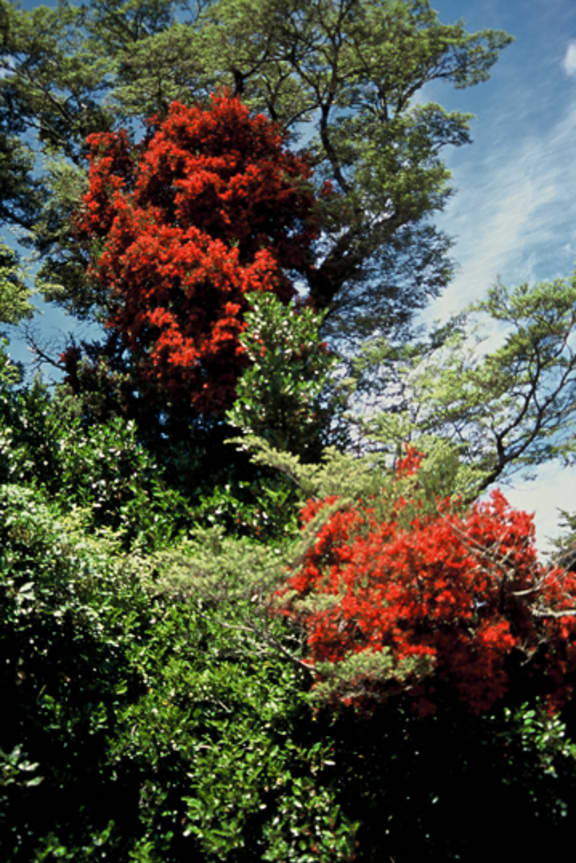
New Zealand Mistletoe on beech trees Photo: Department of Conservation
Astelias, or nest epiphytes, create their own miniature world, trapping water and rotting humus to feed themselves.
Tom and K.C. recommend looking up next time you’re walking in the bush – you might be surprised with how many epiphyte species you find.
They recommend Otari Wilton’s gardens in Wellington as a great epiphyte-viewing place.
Mistletoe rescue mission
Hear about a pioneering attempt to translocate mistletoe into Zealandia sanctuary.
Listen to the full podcast to hear plenty of interesting anecdotes about epiphyte lifestyles.


